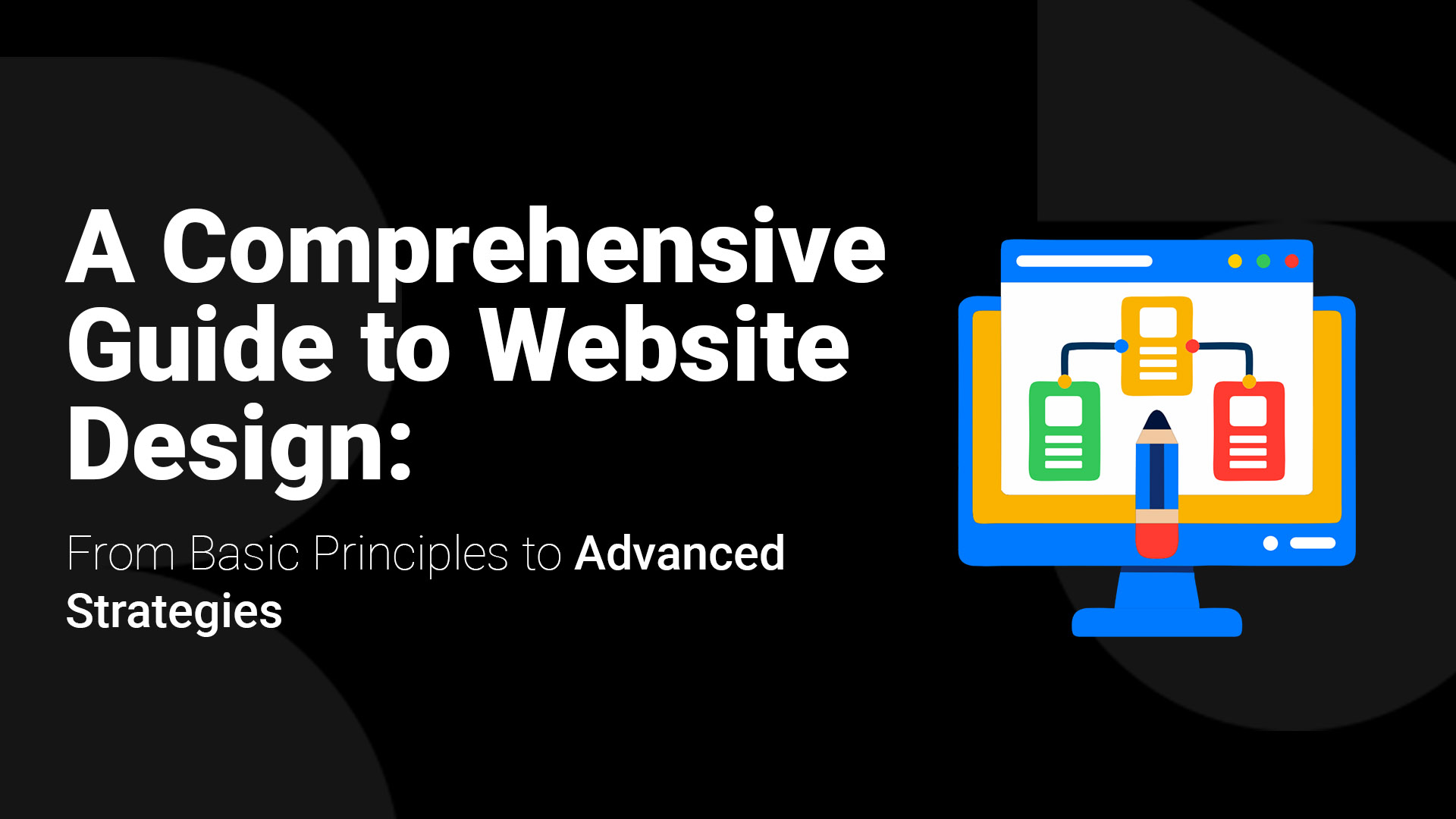
In the digital era, where first impressions are formed within seconds, the importance of website design cannot be overstated. It goes beyond aesthetics; it's the virtual storefront, the welcoming handshake, and the key to online success. A well-designed website is not just visually appealing; it is a user-centric gateway that converts visitors into customers.
Journey through the evolution of website design trends, witnessing the dynamic shifts from static pages to responsive, interactive experiences. Explore how trends reflect societal changes and technological advancements, shaping the very fabric of the online world.
Embark on a comprehensive journey through the intricacies of website design. From laying the groundwork with basic principles to navigating the complexities of advanced strategies, this guide is your roadmap to creating websites that not only captivate but also convert.
Importance of User-Centered Design
Dive deep into the core of website design by understanding the paramount importance of user-centered design. Learn how putting users at the forefront of your design decisions is the catalyst for a seamless and enjoyable online experience.
Elements of a Positive User Experience
Uncover the alchemy behind crafting a positive user experience. From intuitive navigation to engaging content, discover the elements that transform casual visitors into devoted users.
Definition and Significance
Grasp the concept of responsive design and its significance in the era of diverse devices and screen sizes. A responsive design ensures your website adapts gracefully, delivering a consistent experience to every user.
Techniques for Implementing Responsive Design
Explore the practical techniques that empower you to implement responsive design seamlessly. From flexible grids to media queries, master the tools that make your website universally accessible.
Creating Intuitive Navigation
Navigate the intricate art of crafting intuitive navigation that guides users effortlessly. Understand how a well-designed navigation system enhances user satisfaction and encourages exploration.
Best Practices for Information Hierarchy
Delve into the best practices for organizing information effectively. Learn the art of presenting information in a hierarchical manner, ensuring users find what they need with ease.
Importance in Guiding User Attention
Grasp the pivotal role of visual hierarchy in guiding user attention. Explore how strategic visual arrangement influences user interaction and engagement.
Techniques for Establishing Visual Hierarchy
Master the art of establishing a clear visual hierarchy. From contrasting colors to strategic placement, discover techniques that elevate your design and captivate your audience.
Psychological Impact of Colors
Embark on a colorful journey into the psychological impact of colors. Understand how different hues evoke emotions and learn to wield the power of color to create a compelling user experience.
Creating a Consistent Color Palette
Craft a consistent color palette that serves as the visual signature of your brand. Explore the harmony of colors and how they contribute to brand recognition.
Choosing Appropriate Fonts
Dive into the nuanced world of typography. Learn the art of selecting fonts that not only align with your brand but also enhance readability and visual appeal.
Importance of Readability and Accessibility
Uncover the significance of prioritizing readability and accessibility in your typography choices. From font size to spacing, ensure your message is clear and inclusive.
Incorporating Microinteractions
Elevate your website's user experience by exploring the world of microinteractions. Learn how subtle, interactive elements create a sense of delight and engagement.
Use of Animation for Engagement
Harness the power of animation to captivate your audience. From subtle transitions to bold animations, discover how motion enhances user engagement and storytelling.
Definition and Application
Unravel the concept of parallax scrolling and its application in creating visually stunning and immersive websites. Understand how depth and movement enhance the narrative.
Pros and Cons of Parallax Scrolling
Weigh the pros and cons of parallax scrolling. While it adds visual appeal, it's crucial to understand when and how to use it for optimal impact.
Embracing Simplicity
Embrace the elegance of minimalist design trends. Learn how simplicity is not just a design choice but a powerful strategy that focuses on essential elements and enhances user experience.
Case Studies of Successful Minimalist Websites
Draw inspiration from real-world case studies. Explore how renowned brands have successfully embraced minimalism, creating impactful and memorable online experiences.
Logo Design and Placement
Explore the significance of a well-designed logo and its strategic placement in reinforcing brand identity. Understand how a logo becomes the visual ambassador of your brand.
Branding Through Visual Elements
Dive into the realm of visual elements that contribute to brand recognition. From color schemes to imagery, explore how cohesive visuals build a strong brand identity.
Importance of Trustworthy Design
Delve into the crucial role of trustworthiness in design. Learn how a trustworthy design instills confidence in users, fostering loyalty and repeat visits.
Building Credibility Through Design Choices
Explore how every design choice contributes to building credibility. From consistent branding to transparent communication, understand the elements that establish credibility.
In an era dominated by mobile devices, understand the significance of adopting a mobile-first design approach. Explore how catering to mobile users is not just a trend but a necessity for success.
Learn effective strategies for designing websites that seamlessly adapt to various devices and screen sizes. From responsive grids to flexible images, ensure your website looks and functions flawlessly on every screen.
Discover the essential tools and techniques for successful mobile-first development. From mobile-friendly frameworks to performance optimization, equip yourself to create websites that excel in the mobile landscape.
Acknowledge the imperative role of web accessibility in creating an inclusive online environment. Understand that accessibility is not just a legal requirement but a moral responsibility.
Explore practical approaches to designing websites that cater to diverse user needs and abilities. From accessible navigation to adaptable content, embrace a user-centric approach that includes everyone.
Learn about the importance of adhering to accessibility standards. Ensure your website aligns with industry guidelines, making it accessible to individuals with disabilities and creating a positive user experience for all.
Importance of User Feedback
Emphasize the pivotal role of user feedback in refining your website. Understand how user testing provides invaluable insights into user behavior, preferences, and pain points.
Conducting Usability Tests
Take a step-by-step approach to conducting usability tests. From defining objectives to analyzing results, learn how to leverage user testing for continuous improvement.
Improving Page Load Times
Explore techniques to optimize page load times. Understand that a fast-loading website is not just a convenience but a necessity for retaining user interest.
Optimizing Images and Multimedia
Strike the right balance between visual content and performance. Learn how to optimize images and multimedia elements to ensure a seamless and efficient user experience.
Stay ahead in the dynamic world of web design by staying informed about the latest trends and technologies. Embrace a mindset of continuous learning to remain at the forefront of innovation.
Explore the integration of emerging technologies into your website design. From AI to AR, understand how these technologies can elevate user experience and give your website a competitive edge.
Find the delicate balance between following trends and adhering to timeless design principles. Understand that while trends come and go, foundational design principles stand the test of time, creating enduring and impactful websites.
Summarize the key principles and strategies covered in this exhaustive guide. Provide a comprehensive reference for designers and developers committed to creating websites that not only meet but exceed user expectations.
Encourage readers to embrace continuous learning in the ever-evolving field of website design. Inspire them to adapt to new technologies, stay curious, and consistently refine their skills for sustained success.
Offer insightful reflections on the future of website design. Provide a forward-thinking perspective on emerging trends, technologies, and the evolving role of design in shaping the digital landscape. As we look ahead, encourage readers to be pioneers, pushing the boundaries of creativity and functionality in website design.
This comprehensive guide to website design covers everything from foundational principles to advanced strategies. It explores essential design elements like layout, typography, color theory, and user experience (UX), as well as advanced topics like responsive design, SEO optimization, and interactive features. By mastering these concepts, designers can create visually appealing, functional, and user-centric websites that cater to diverse audiences and business goals.

The Metaverse is a virtual, interconnected digital universe...

Generative AI (GenAI) is poised to redefine industries in 20...

Hyperautomation is a transformative approach that integrates...